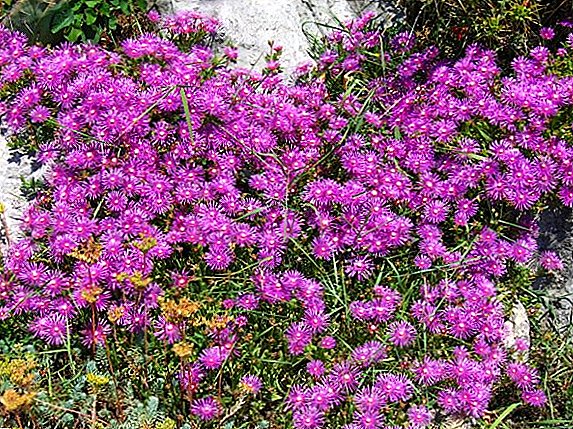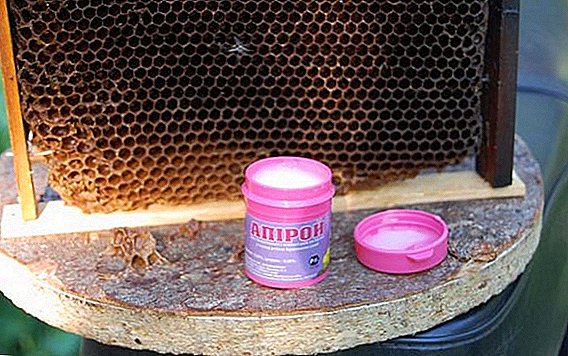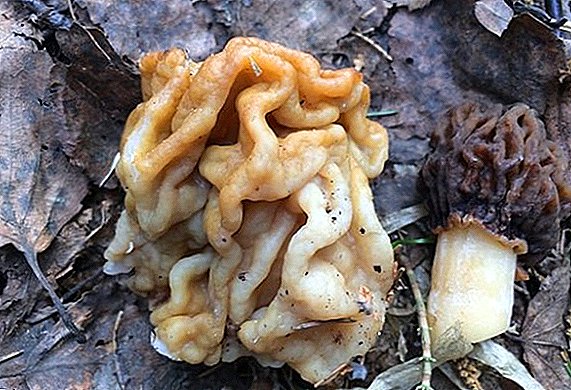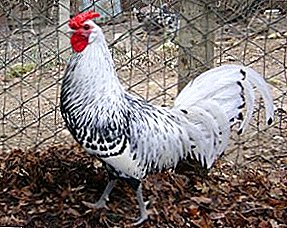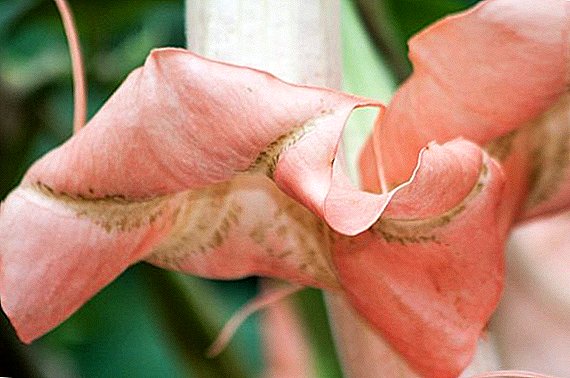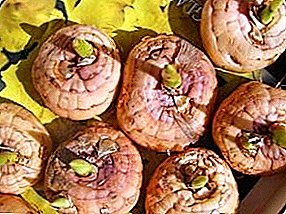 Gladiolus - These are beautiful flowers from the Iris family. They can often be found at the dacha plots, as they well complement any garden and garden.
Gladiolus - These are beautiful flowers from the Iris family. They can often be found at the dacha plots, as they well complement any garden and garden.
In order for the flowers to continue to delight the owner of the site next year, it is necessary to dig out their bulbs in time.
When do you need to dig up gladioli?
Usually, the digging of the bulbs falls on the second half of September and continues until the first frost occurs.
 It is important not to forget that to fully ripen the bulbs, you must wait 35 to 45 days after completion of flowering.
It is important not to forget that to fully ripen the bulbs, you must wait 35 to 45 days after completion of flowering.
Unfortunately, in the northern regions, where the planting of flowers takes place relatively late, the bulbs may not have time to mature.
On the territory of "non-chernozem" Russia, the main part of gladioli blooms in the second half of August, therefore, it is necessary to dig up from September 15. At the same time, one should not pay attention to a slight under-ripening of the bulb, since it will not affect the safety of the root crop itself or its germination.
Also read the features of growing dahlia.
It tells in detail about the diseases and pests of marigolds.
See photos of daffodils: //rusfermer.net/sad/tsvetochnyj-sad/vyrashhivanie-tsvetov/neprihotlivie-nartsissy-prosypayutsya-vmeste-s-rannej-vesnoj.html
Gladiolus cleaning is carried out in dry weather so that the ground is too wet and does not stick to the bulbs. It is much more convenient when she collapses from them herself, without delivering the inconvenience to the cottager.
In addition, it is much easier to get all the children out of the dry ground than out of the hardened or damp.
The procedure for cleaning the bulbs
 First you need to remove the early and middle varieties of flowers, and then you can move on to the later ones. It is also important to take into account another feature.
First you need to remove the early and middle varieties of flowers, and then you can move on to the later ones. It is also important to take into account another feature.
Among equals in terms of harvesting first, dark varieties (red, purple, cherry), as well as blue ones should be dug out.
During cold weather, these varieties quickly lose their resistance to the action of various fungi, so the bulbs can die without waiting for cleaning.
If the dug bulbs are heavily contaminated with earth, they can be washed in clean running water. After that, they are thoroughly dried.
For prevention, it is better to use a solution of boric acid or ordinary potassium permanganate. The bulbs are placed in such solutions for half an hour, and then removed and dried.
In excavated gladioli, it is important to cut the stem, leaving a stump of 1.5 cm in size. In the event that the green part of the plant is affected by insects or fungus, it is stored in a separate container and burned.
This will prevent the spread of the disease to healthy bulbs and plants.
Bulb storage preparation
Before storing, the gladiolus bulbs are carefully dried. This process can take about two months.
 So that the varieties do not get confused once again, they are laid out in separate trays in one layer. They should be stored in a well-ventilated area, where the temperature will be 25-30 ° C for the first month and 20 ° C for the second.
So that the varieties do not get confused once again, they are laid out in separate trays in one layer. They should be stored in a well-ventilated area, where the temperature will be 25-30 ° C for the first month and 20 ° C for the second.
During drying, the gardener should periodically turn the bulbs and inspect them for the appearance of fungal diseases. Sick tubers are always destroyed.
However, if the variety of gladiolus is too valuable, then the damaged parts of the bulb can be cut out. Then it is further treated with a solution of potassium permanganate and sent back to storage.
Sometimes, for extra protection from insects, next to the bulbs are placed the teeth of washed garlic. It well repels all possible parasites, but, unfortunately, it cannot protect gladioli from infectious diseases.
Find out when to replant daylilies, so that they would decorate your site for the next year.
See photos of the flower Rudbeckia: //rusfermer.net/sad/tsvetochnyj-sad/vyrashhivanie-tsvetov/rudbekiya-solnechnyj-yarkij-tsvetok-dlya-lyubogo-sada.html
Bulb treatment
Some summer residents prefer to additionally process gladiolus bulbs. To do this, they clean them from the integumentary scales, and then sent to storage.
 On the one hand, this method helps to protect the root from thrips and the appearance of rot.
On the one hand, this method helps to protect the root from thrips and the appearance of rot.
However, on the other hand, the scale plays the role of an important protective layer, which does not allow the bulb to dry out during the winter.
Another method used for the additional processing of the bulbs is pouring molten paraffin. It tightly envelops the root crop, protecting it from drying out and the appearance of mold.
To melt paraffin, you need to heat it in a water bath, and then the bulbs are immersed in it. They need to be held for a few seconds, and then can be removed and sent to storage. It is important to remember that paraffin is not removed before planting.
Before the final laying of corms it is important to examine them once more, removing the thinnest scales. After that the bulbs are arranged in bags, where the grade and time of digging is indicated. Usually for these purposes fabric bags are used, since they are well breathable.
How to store the bulbs?
Dry cellars are considered to be the best place to store root crops. However, not every florist boasts such a basement.
 For this reason, the bulbs can be stored on the bottom shelf of the refrigerator where vegetables are usually stored.
For this reason, the bulbs can be stored on the bottom shelf of the refrigerator where vegetables are usually stored.
To do this, they are pre-folded into paper bags having several air inlets.
If there are no such packages, then regular newspapers packed in plastic bags with holes can be used. Some summer residents keep onions in capron tights.
You also need to take into account the fact that at the end of the period of natural rest, gladioli begin to germinate. To avoid this, the roots need to store a week in a warm and dry place.
Features of planting and caring for the primrose perennial.
Growing ornamental cabbage at the dacha: //rusfermer.net/sad/tsvetochnyj-sad/vyrashhivanie-tsvetov/dekorativnaya-kapusta-ekzotichnyj-i-yarkij-element-v-vashem-sadu.html
Results
Gladioli are dug up in late September-early October, when the first frosts begin. It is very important to have time to dig up all the bulbs before the onset of winter, as they will not be able to survive even 10-degree frost.
Immediately after digging, the bulbs are stored in dry and warm rooms where they will wait for the onset of spring. They can be further protected from pests and fungi with potassium permanganate or boric acid solution.


 Also read the features of growing dahlia.
Also read the features of growing dahlia. Find out when to replant daylilies, so that they would decorate your site for the next year.
Find out when to replant daylilies, so that they would decorate your site for the next year. Features of planting and caring for the primrose perennial.
Features of planting and caring for the primrose perennial.
